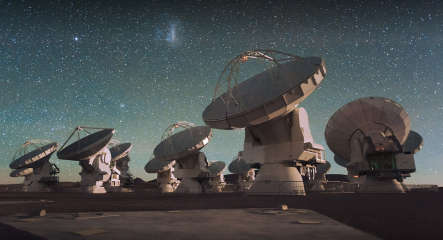As the Internet of Things expands exponentially, astronomers and tech companies are fighting it out in the newly crowded radio spectrum. In the high desert of northern Chile, the Atacama Large Millimeter Array (ALMA) scans the night sky, its 66 high-precision antennas seeking out the faintest radio waves. Unfortunately, the frequencies ALMA depends on to gather valuable scientific data exist on a previously unallocated radio spectrum suddenly crowded by competing interests, including all those smart devices scattered throughout our homes. “There are no spectrum bottlenecks for dedicated Internet of Things systems yet,” Kevin Ashton, co-founder and former executive director of Massachusetts Institute of Technology’s Auto-ID Center, told Bloomberg BNA, “but we are seeing Wi-Fi services get maxed out, as there are only so many channels you can cram into the available spectrum.” “The extent to which the Internet of Things will be a threat to radio astronomy will depend upon whether the regulatory standards can be upheld in the face of the massive onslaught of lawyers funded by the private sector,” Carla Beaudet, RF Test & Measurement Engineer at National Radio Astronomy Observatory explains to Discover Magazine. “If the regulatory standards are upheld rather than modified every time somebody needs more spectrum, there will still be small windows of spectrum in which astronomers can observe.” Smart Spectrum Every smart device, from temperature savvy toasters to programmable thermostats, communicates via radio waves. Unfortunately, as the number of wired gadgets and intelligent contraptions multiplies, previously unobstructed frequencies are jammed with the chatter of clever toothbrushes and talkative televisions. While some bands are protected by the FCC – 1400 megahertz for hydrogen, for example – the rest of the spectrum gets shared by 29 services ranging from mobile phones to radio stations to military drones. As each...

